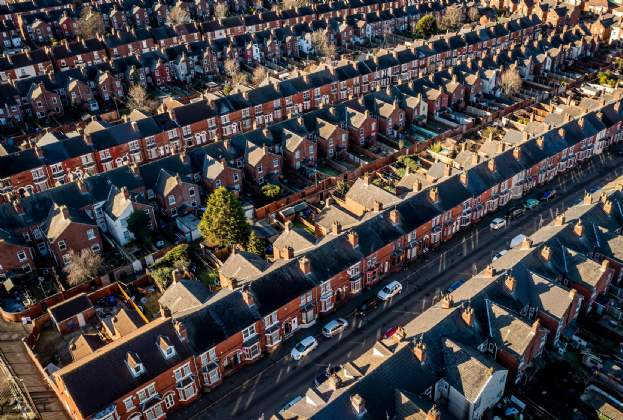This amount of public land represents a significant opportunity for housing in particular, as the capital is still falling well short of its housing need.
How many homes?
If all of these public land parcels were built out at local average densities, then 693,000 homes could be delivered across the city. The greatest number could be delivered in Tower Hamlets, due to the high densities that are viable in the borough. It’s closely followed by Southwark, which has lower average densities of homes, particularly in the south of the borough, but greater amounts of public land in total.
Crucially, these are the areas in which land values should be low enough to make lower-mainstream homes more deliverable. This is the part of the market where the mismatch between need and supply is the greatest, and the public land in these areas could be used to help plug this gap. You can read more about this in our earlier blog here.
Despite generally being larger, many of the outer boroughs tend to have lower amounts of public land appropriate for development when compared to central boroughs. A large part of this is the greenbelt, restricting land use. This compounded with much lower typical housing densities means the number of homes deliverable on the fringes of the city is relatively low. Bromley therefore bottoms the list, with an estimated c.2,800 homes potentially deliverable on public land.
These current densities are based on existing infrastructure, however. Increasing the level of infrastructure could support higher densities of homes and significantly increase the regeneration potential of certain areas. It’s typically easier to achieve greater densities on larger sites.
Large-scale opportunities
We’ve identified c.1,300 sites over 20 acres. These larger sites present unique opportunities for large-scale regeneration. This would allow for greater densification of under-utilised parts of the city, and would be large enough for significant place-shaping, providing not just new homes, but leisure and employment opportunities as well.
Such development could take advantage of public/private sector land adjacencies. We’ve identified c.900 instances of a private development adjacent to public land. There may be significant opportunity for private developers in such situations to collaborate with adjacent public land owners to assemble more land for larger developments, leading to more wide-scale regeneration and densification.
The housing potential of this public land has not gone unnoticed by both the Government and GLA. Between 2011 and 2020, 175 public land sites were sold in the city by a variety of government departments via its Public Land for Housing programme. Homes England (which coordinated the programme) estimates that the land released could be used to deliver c.32,000 homes.
All these figures of course represent an upper limit – partially due to the amount of public land with an existing use. Any practical level of delivery will be someway lower. Still, these figures demonstrate the scale of the potential opportunity of unlocking public land to ease the housing pressures the city faces.

.jpg)
.jpg)
.jpg)
.jpg)

.jpg)
.jpg)
(2).jpg)
(4).jpg)
.jpg)